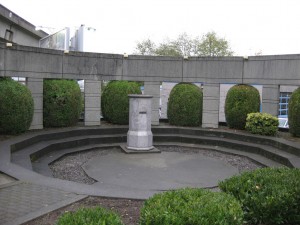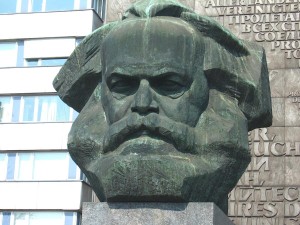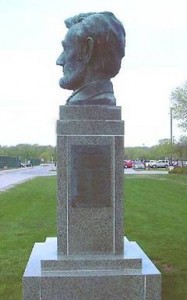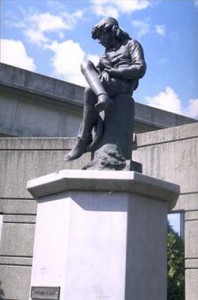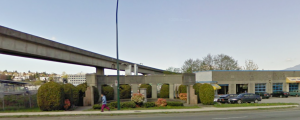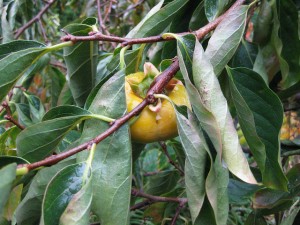
Russian persimmons at Cottonwood
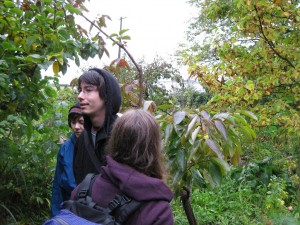
Inspecting Persimmons
One of the delights of late autumn is the sweet taste of persimmon. Almost 20 years ago, when I was first designing the Asian arboretum at the brand new Cottonwood Community Gardens, I ordered a few small, bare-root trees from a nursery called Oregon Exotics. Its proprietor, Jerome R Black, described himself as a peripatetic ethno-botanist and his catalog featured a diversity of rare plant varieties I hadn’t seen anywhere else. He collected many of the parent plants himself, in remote areas of Asia and South America, where he traveled in search of overlooked crops worth trying in warmish temperate climates. Vancouver, with its relatively cool and wet weather is at the northern edge of where persimmons might be expected to flourish, so I selected three varieties from his listings – ‘Russian,’ ‘Korean,’ and ‘Great Wall,’ which were described as cold tolerant and early maturing. Cottonwood Gardens is situated in a kind of urban heat island, so I had high hopes of seeing the fruit ripen, in time for the torrential rains of fall. The trees got off to a slow start, but after three years or so, the first fruits appeared. Life brought about its inevitable changes and after I moved away to New York City (and eventually Cortes Island), I wasn’t able to check in with my former botanical charges nearly as often as I would have liked.
While I was back in Vancouver a couple of weeks ago, I got to hang out with of the Purple Thistle Collective. They are a youth group who are doing amazing work farming the parking strips of East Van’s industrial zone. Their gonzo, earth-repair spirit reminded me of when we first started Cottonwood, which is in the same area, some 20 years ago.
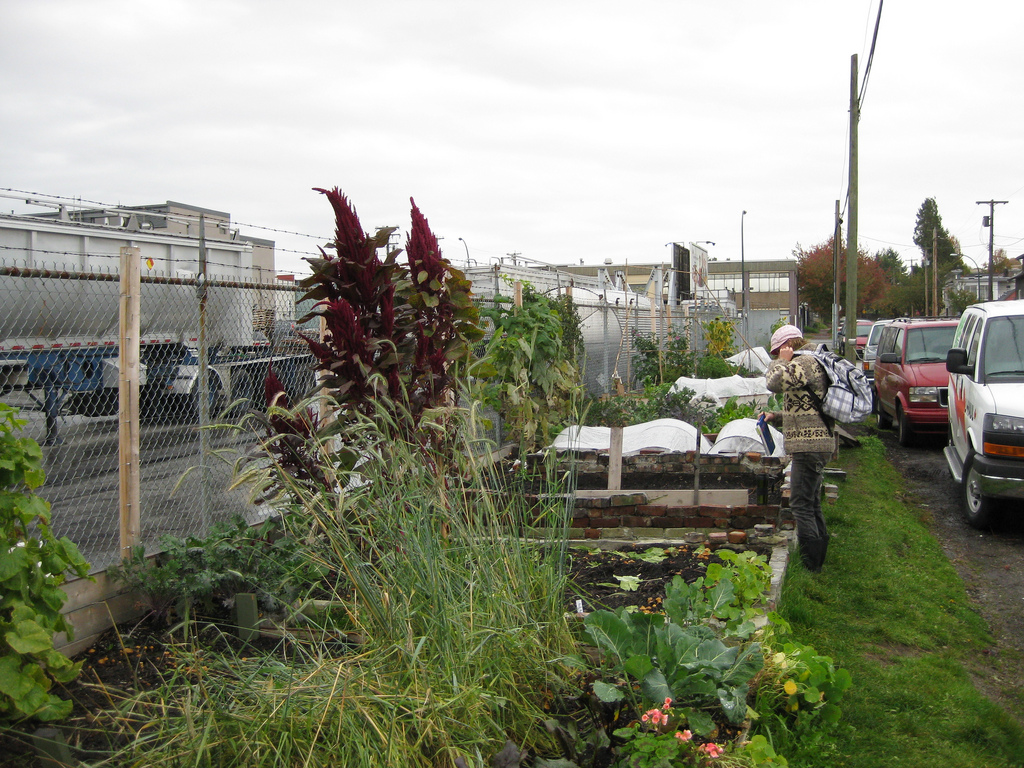
Purple Thistle's Industrial Zone farming
In addition to being guerrilla gardeners, the gang at the Thistle turn out to be Super 8mm film geeks, determined to bring the endearingly crusty medium back to a whole new generation of enthusiasts. There is something particularly endearing about these teens and twenty-somethings, raised in the great smothering bosom of the Internet, seeking to re-vivify Super 8, with all of its grainy unpredictability and lack of instant gratification. Viva Analog!! I’ll be pulling some of my ‘Haute Cold War’ footage from the vault soon to screen for them, – stuff I shot in Berlin, Toronto and New York, in the early 1980’s. There is a sequence they might like, which shows the thriving DMZ ecology of the no-man’s land in between the two sections of the Berlin Wall – a mine field covered in lush meadow that supported a teeming population of hares, which in turn were preyed upon by a proliferation of raptors.
Anyway, back to the persimmons. When the Thistles and I trooped over to look at the plantings in Cottonwood, I was happy to see the persimmon trees bearing better than ever, their shiny leaved branches, bobbing in the November drizzle with jaunty orange fruits. For those of you who have never eaten a persimmon, some caution is in order. Fuyu, type persimmons taste sweet even when not completely ripe but many others, such as the popular Hachiya, need to be quite soft before you eat them, otherwise your mouth will feel like you’ve just sucked on a deodorant stick, – a saliva-less gaping hole through which you will have to beg for water. Well not quite that bad, but the fruit-fancier’s description of ‘astringent’ is well worth noting. When sufficiently ripened though, these persimmons are sheer ambrosia. Though native to the Far East, these ‘kaki’ type persimmons (Diospyros kaki), have a long history of cultivation in the Mediterranean. Over the years, I’ve noticed quite a few of these trees popping up in East Vancouver, usually in the yards of Italian immigrants, and many of them seem to be producing well. Given the right location and a bit of care, Asian persimmons should thrive in at least the mildest parts of Canada. The related American persimmon (Diospyros virginiana) is native to areas not that far south of the Great Lakes and can stand quite a bit of cold. Clearly some experimentation is in order. Grimo Nut Nursery offers some varieties they say do well in Southern Ontario, which might be worth a try in other mild-ish areas as well.
I’ve grown quite a few persimmon trees from seed over the years, though none have yet reached fruiting size. The trick is to let the seeds overwinter outside or in a fridge, to stimulate germination the following spring. I put them into a zip-lock bag with a bit of soil, in a spot where rodents can’t get at them. I’ve got a couple of Diospyros lotus seedlings, also known as Date plums, growing in my Cortes Island yard. I originally propagated them from a fruit I picked up from the path in the Brooklyn Botanical Garden. The trees, though small, seem to be doing well and haven’t yet been set back during the past few winters. The fruits of the parent tree were quite small as I recall, not exactly the ‘food of the gods,’ implied by their Latin name – unless of course the gods were not particularly discerning fruit-wise. Odysseus’s men were said to have been way-laid by them in the land of the lotus eaters. Maybe the fruits were larger in those days or maybe Odysseus and his gang were tiny midget people the size of human thumbs. Probably though, his sailors just got bored of being told to “smite the gray seas with their oars,” by their hard-ass captain and were holding out for a little well-deserved ‘R and R.’ So my date plums will likely be relegated to my ever expanding collection of ‘somewhat edible’ plants, an aspect of my gardening hobby that my significant other continues to find perplexing.
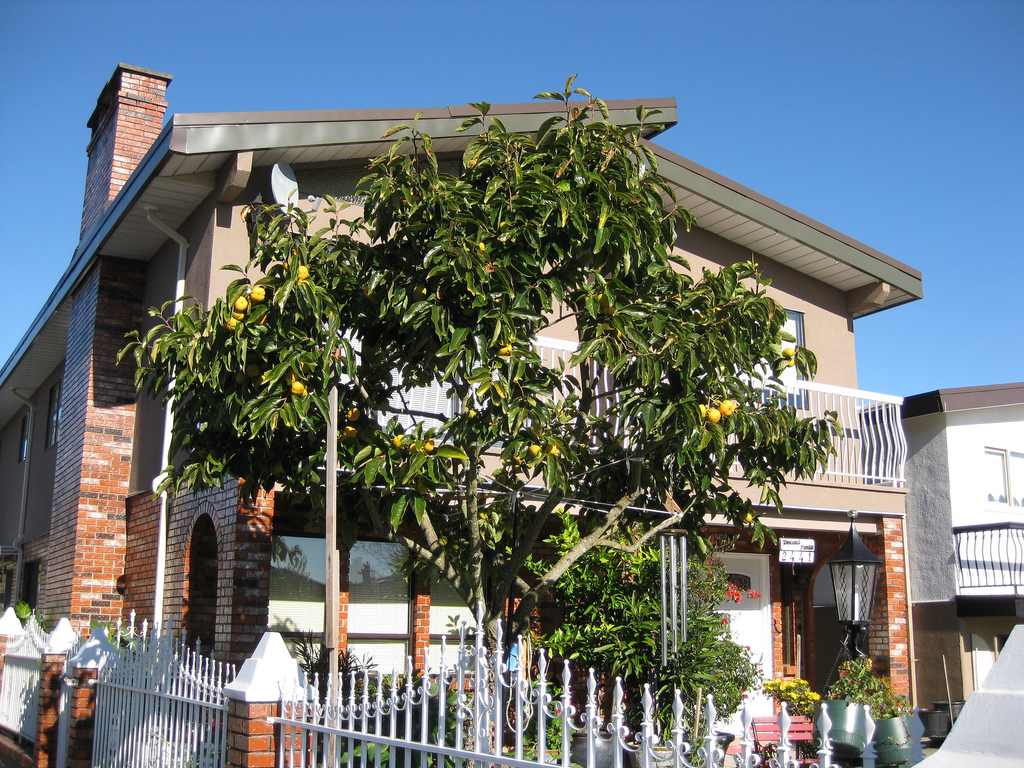
East Van persimmon – 5th & Nanaimo


